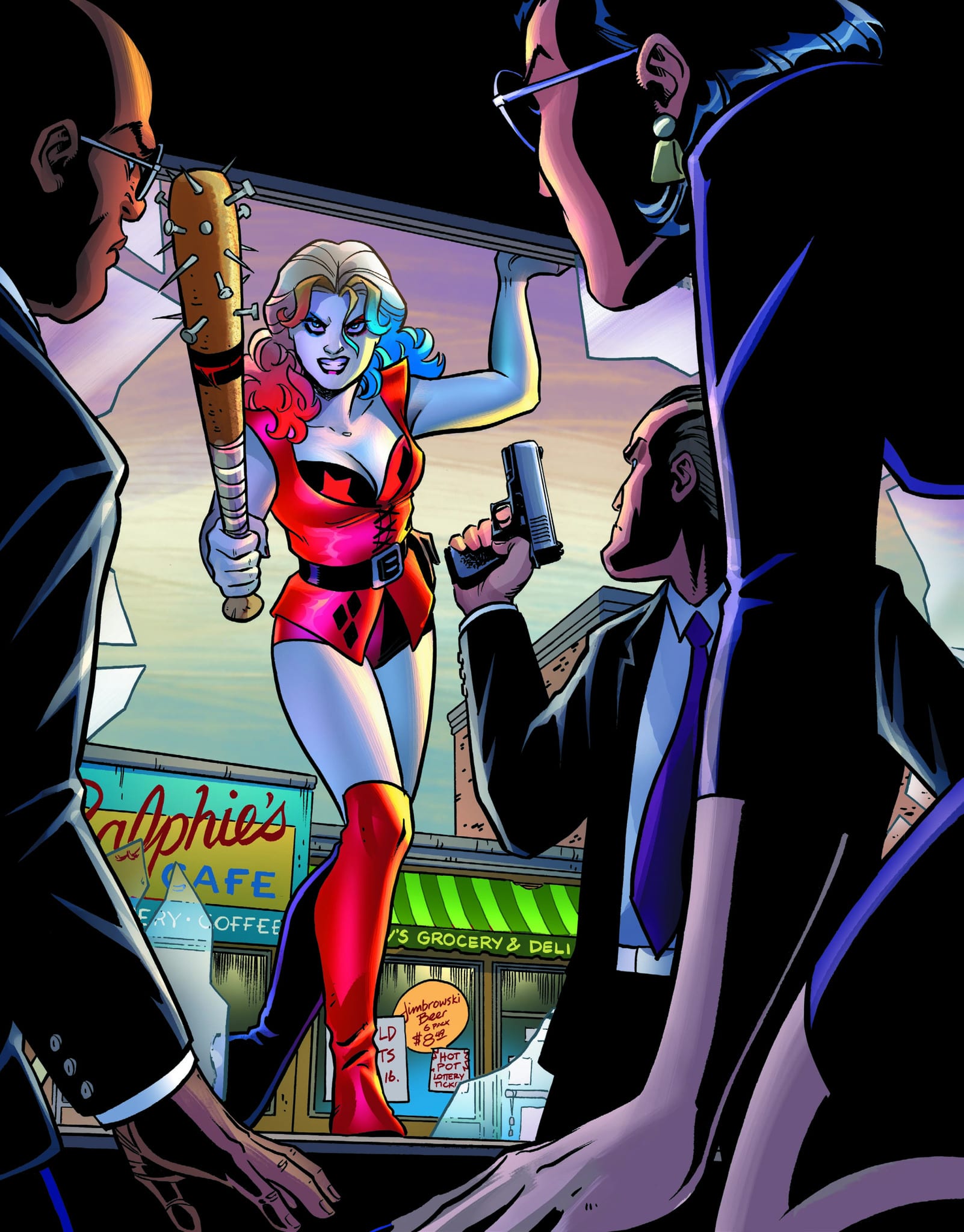Just in time for the theatrical release of Birds of Prey, acclaimed Harley Quinn scribes Amanda Conner and Jimmy Palmiotti have teamed up to give fans an adult-oriented take on the popular character. DC Comics’ Harley Quinn & the Birds of Prey #1, on sale February 12, offers an off-the-wall opening chapter to another Harley-focused adventure, but the comic’s excessive bloodshed and sexuality may turn off some readers.
Harley Quinn & The Birds of Prey #1
Writers: Amanda Conner & Jimmy Palmiotti
Artist: Amanda Conner
Colors: Paul Mounts
Letters: John J. Hill
If you don’t know what you’re getting into, you might be tempted to put this comic down after a few pages. It opens with a bizarre dream sequence, where the scantily clad Harley and Poison Ivy treat Superman like submissive eye candy. The duo has captured Jimmy Olsen, so Superman does whatever they want-like serving them Kryptonian shots- in the hopes of saving his friend. When Harley and Ivy discuss Superman’s power set, Ivy suggestively says, “I can see him check out my bloomers.” In the context of the whole issue, the dream doesn’t add anything meaningful to the plot. Even for Conner & Palmiotti’s extra zany take on Harley, the whole scene feels gratuitous. But with some patience, you’ll find that, amidst a surplus of violence and oversexualization, this comic offers a story with some emotional depth.

After Harley wakes up from her dream, we quickly see that she’s fallen on hard times. Her relationship with Poison Ivy is on the rocks. Loan sharks burnt down the Dreamin’ Seaman hotel where she housed a bunch of her friends. Harley’s life is in shambles, and she’s determined to get back on track. Her quest brings her to Gotham, against her allies’ wishes. Harley’s return home has the potential to deliver meaningful character growth. We already see her reunite with some of her Birds of Prey teammates; the series could flourish with the exploration of these relationships. Plus, Conner and Palmiotti show us that the Joker plans on getting revenge against Harley. A showdown between Harley and Joker could be the highpoint of the story. Though we’re left merely hoping for these future payoffs, the writers build some strong narrative foundations.

Conner’s art, like her work on her acclaimed Harley Quinn series, is fun to look at. Bright colors and a cartoonish style make the story feel like an episode of Harley’s self-titled animated series. During a flashback, Harley recalls a tropical vacation with Ivy. Here, color artist Paul Mounts crafts a heavenly setting, with romantic pinks and purples complimenting a golden sun. Thanks to the art team, this scene compliments the passionate bond between Ivy and Harley.
But to be clear, it’s hard to ignore the carnage and the ham-handed focus on sexuality. Conner’s chaotic fight scenes feature, in no particular order, a billboard decapitating a man, a goon falling head-first onto a spiked bat, Huntress shooting men in the head with her crossbow, and Harley repeatedly shooting a man in the chest. The art team shows these brutal acts with minimal discretion. We see the arrow exit the goons’ heads, the bullets shred another man’s body, and so on. Mounts adds plenty of blood spatter throughout these fights to maximize the carnage. Moments like these make the comic feel like it’s jam-packed with R-rated content just to utilize it’s DC Black Label billing.

Likewise, Conner consistently draws Harley as sexually as possible. From needless shots of Harley in her underwear to a whole scene where Huntress helps Harley change her costume, the art consistently objectifies “the Cupid of Crime.” While various other artists are infamous for the lewd way they draw female characters, Conner’s portrayal is still questionable. With each oversexualized drawing of Harley, the comic says, “Look at me, I’m cool because I’m risqué.” Some of DC’s other Black Label series have an excuse for their excess; Joker/Harley: Criminal Sanity features a serial killer, so of course the comic is filled with graphic crime scenes. Here, exaggerated sexuality and violence aren’t needed.
Fans of Conner’s and Palmiotti’s Harley will probably enjoy this opening installment. It captures the quirky tone of their previous work with the character without the limits of a typical comic. In other words, they ran wild with her, and their success ultimately depends on the reader. While there are aspects of the story we can hang onto, the objectification of Harley is off-putting, which makes thoroughly enjoying this issue a tall task.
What’d you think of Harley Quinn and the Birds of Prey #1? Where do you hope to see the series go from here?

